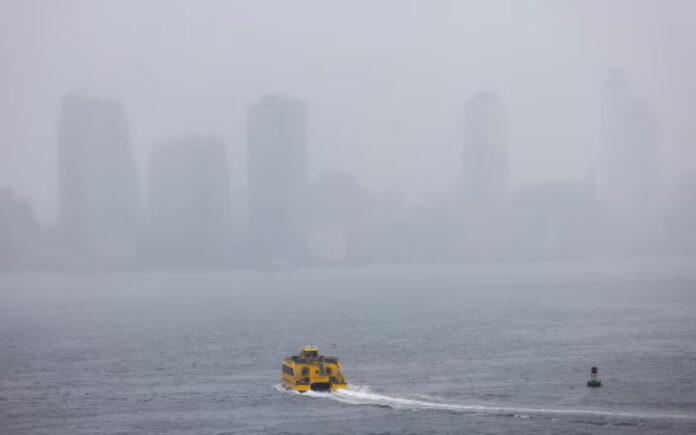New York: The northwestern United States narrowly avoided a second “bomb cyclone” on Thursday, as the anticipated storm fell short of the required conditions. However, an ongoing “atmospheric river” inundated northern California with heavy rain and strong winds, exacerbating the region’s weather challenges.
The first bomb cyclone, which occurs when rapidly falling air pressure generates hurricane-force winds and intense precipitation, struck earlier in the week, causing significant damage. On Monday and Tuesday, the storm claimed two lives, left hundreds of thousands without power from Washington state to northern California, and toppled trees onto cars and houses, as widely shared on social media.
Forecasted Bomb Cyclone Fails to Materialize
While a second bomb cyclone was forecasted for Thursday, its atmospheric pressure did not drop quickly enough to meet the criteria for such classification. “The pressure failed to drop fast enough over a 24-hour period to earn the provocative designation,” explained Joe Wegman, a meteorologist with the National Weather Service’s Weather Prediction Center.
Despite not being labeled a bomb cyclone, the storm system still delivered intense rain and strong winds across the region. Northern California, in particular, faced relentless rainfall from an atmospheric river, creating hazardous road conditions alongside flood and wind alerts.
Weather Impacts and Ongoing Risks
The National Weather Service reported wind gusts reaching up to 65 mph (105 kph) on Thursday evening, with risks of life-threatening flooding, mudslides, and rockfalls persisting. Approximately 272,000 homes and businesses in Washington and Northern California remained without power on Thursday night, a significant improvement from the 600,000 outages recorded on Wednesday.
Also Read | Matt Gaetz Out, Pam Bondi In: Trump’s New Attorney General Choice
In neighboring Canada, the storm also wreaked havoc on the power grid in British Columbia. Provincial electricity provider BC Hydro stated that 225,000 customers experienced outages on Tuesday night, though this number dropped to about 20,000 by Thursday evening.
Drought Relief Amid Weather Chaos
Although the storm caused widespread damage, it brought much-needed rainfall to northern California, which has been suffering from unusually dry conditions. According to the U.S. Drought Monitor, the rain helped replenish reservoirs and moisten parched soils.
“It’s never ideal to have so much rain in such a short period of time, but it certainly helps to fill the reservoirs and moisten the soil,” said Wegman.
Also Read | Taiwan’s President Lai Plans Visit to Key Pacific Nations, Keeps U.S. Transit Stops Confidential
The Weather Prediction Center reported that approximately 11 inches (280 mm) of rain fell in northern California between Wednesday and Thursday morning, with several feet of snow accumulating in higher elevations. Forecaster Rich Otto estimated the storm could bring an additional 5 to 10 inches (130 to 250 mm) of rain.



